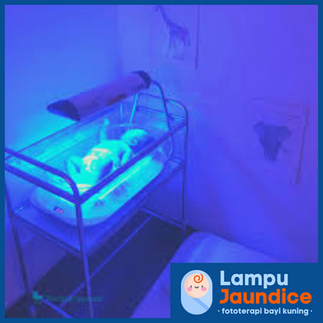Kernicterus Risk: The Serious Complication of Untreated Jaundice
- Ain W.

- Aug 26
- 3 min read
Table of Contents

Introduction
A preventable tragedy—kernicterus is rare but life-altering
Newborn jaundice is common and usually harmless. But when bilirubin levels become too high and go untreated, it can cross into the brain, causing permanent damage known as kernicterus. This condition is entirely preventable with timely care and monitoring.
What Is Kernicterus?
It’s a form of brain damage caused by bilirubin toxicity
Kernicterus occurs when excessive bilirubin crosses the blood-brain barrier and damages brain tissue. It usually affects newborns with severe, untreated jaundice.

How It Relates to Newborn Jaundice
Jaundice is the early warning sign
Most babies develop some level of jaundice after birth. If not monitored or treated, rising bilirubin can become dangerous. Kernicterus typically develops in cases where jaundice is:
Ignored or misdiagnosed – No one notices or assumes it’s nothing serious
Left untreated too long – Bilirubin levels keep rising over time
Occurs in premature or high-risk babies – Their bodies are more sensitive
Who’s at Risk?
Premature babies (before 37 weeks) – Their livers are not fully developed
Babies with low birth weight – Smaller bodies may struggle more to process bilirubin
Babies with blood group incompatibility (e.g., Rh or ABO) – Their immune systems may break down red blood cells faster
Babies with feeding difficulties or dehydration – Less feeding means slower bilirubin removal
Babies with siblings who had severe jaundice – It could run in the family
Symptoms of Kernicterus
Early signs:
Yellowing of skin and eyes that worsens – Jaundice becomes more noticeable
Poor feeding or refusal to feed – Baby may seem too tired or uninterested in eating
High-pitched crying – Unusual, sharp cries can be a warning
Lethargy or floppy limbs – Baby feels limp or unusually sleepy

Advanced signs:
Muscle rigidity or arching back – Baby may stiffen or bend backward
Fever – A sign the body is under stress
Seizures – Uncontrolled shaking or twitching
Unusual eye movement – Eyes may roll or move oddly
Hearing loss (long-term) – Baby may not respond to sounds

Diagnosis and Tests
Bilirubin level test – A blood or skin test to check how much bilirubin is in the body
Neurological evaluation – A doctor checks brain function if symptoms suggest damage
Hearing test – To see if hearing is affected by bilirubin levels
Can Kernicterus Be Prevented?
Yes—early detection and treatment of jaundice are the keys to prevention:
Monitor your baby’s skin and eyes daily in the first week – Look for signs of yellowing
Visit your paediatrician for jaundice checks within 48–72 hours after birth – Especially important after going home from the hospital
Ensure frequent feeding to flush out bilirubin – Breastfeed or bottle-feed regularly
Consider bilirubin testing for high-risk babies – Your doctor can help you decide
Get immediate care if jaundice appears early (within 24 hours) – Early jaundice can be more serious
Long-Term Effects of Kernicterus
Cerebral palsy – A condition that affects movement and posture
Hearing loss – Trouble hearing or deafness
Vision problems – Blurred vision or difficulty focusing
Intellectual disabilities – Learning and developmental delays
Difficulty with speech and movement – Trouble talking or walking normally
Did You Know?
Kernicterus is extremely rare in countries with standard neonatal jaundice screening
Malaysia recommends jaundice screening within 2–3 days after discharge
Prompt phototherapy can prevent almost all cases of kernicterus
Conclusion
Kernicterus is a heartbreaking condition that’s almost always preventable. By staying alert to jaundice symptoms and ensuring early treatment, parents can protect their babies from lifelong complications. If you're ever unsure, consult your paediatrician immediately.
FAQs
1. Is kernicterus reversible?
No, it causes permanent brain damage. Prevention is critical.
2. Can my baby develop kernicterus even with mild jaundice?
Very unlikely. Kernicterus usually follows severe, untreated jaundice.
3. How quickly does bilirubin become dangerous?
It can rise rapidly in newborns, especially in the first 3–5 days.
4. What is the treatment for high bilirubin levels?
Phototherapy is the most common treatment. In severe cases, an exchange transfusion may be needed.
5. Should I delay discharge to monitor jaundice?
Not necessarily, but make sure to return for a bilirubin check 1–2 days after going home.
Talk to a Specialist
👶 Concerned about jaundice or kernicterus risk? Get expert guidance from our paediatric care team.📲 Book a consultation via WhatsApp now! Every day counts—protect your baby’s future today!
.png)









Comments